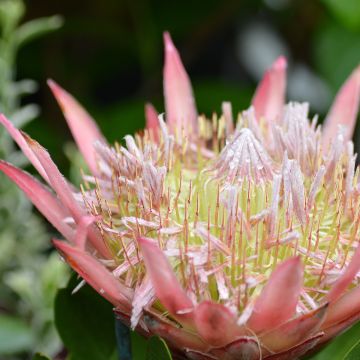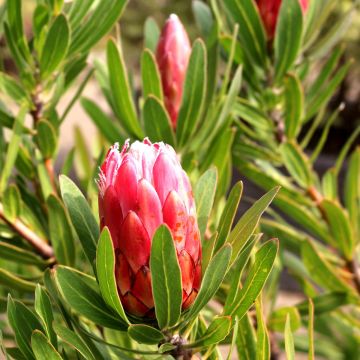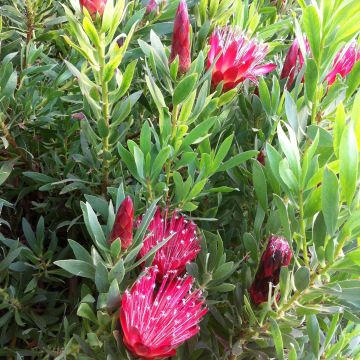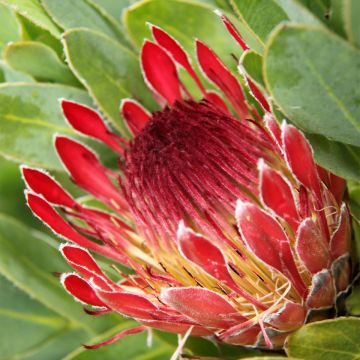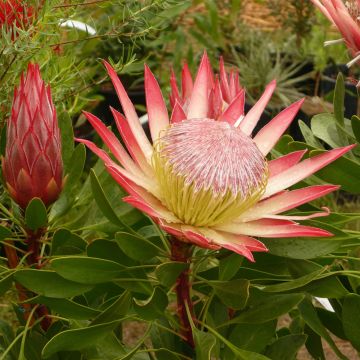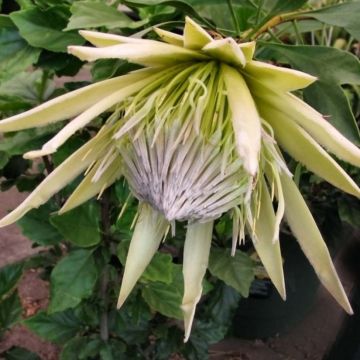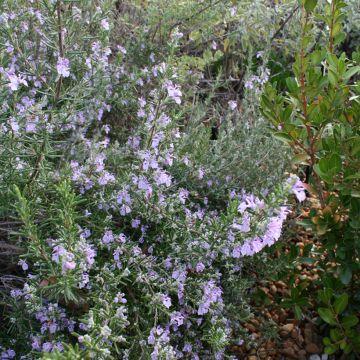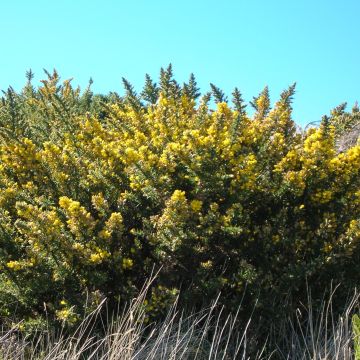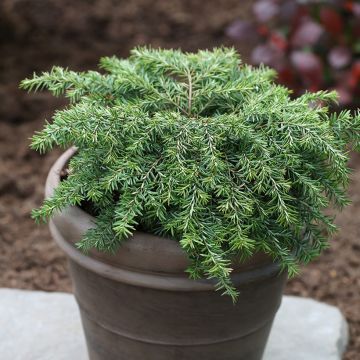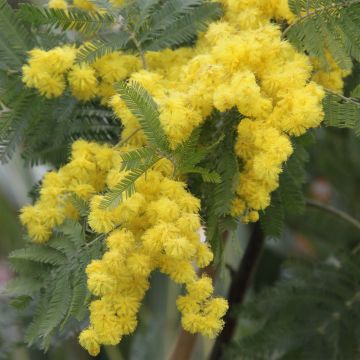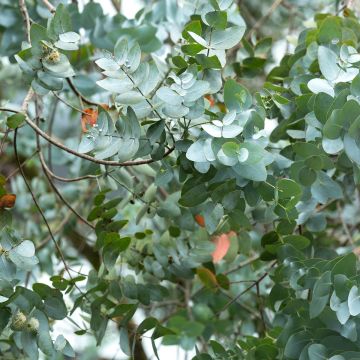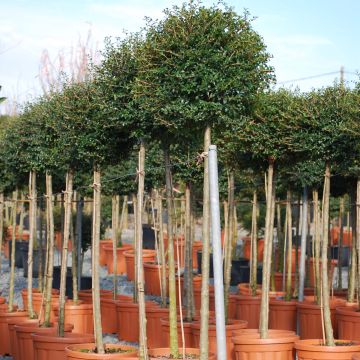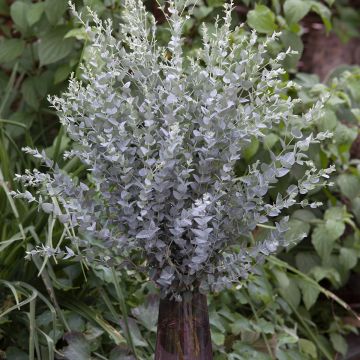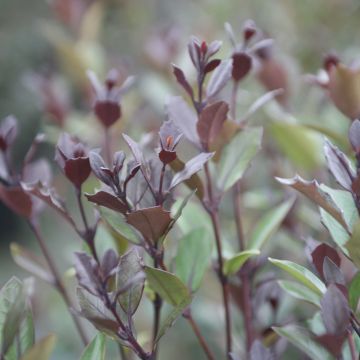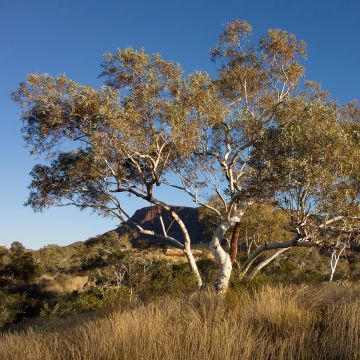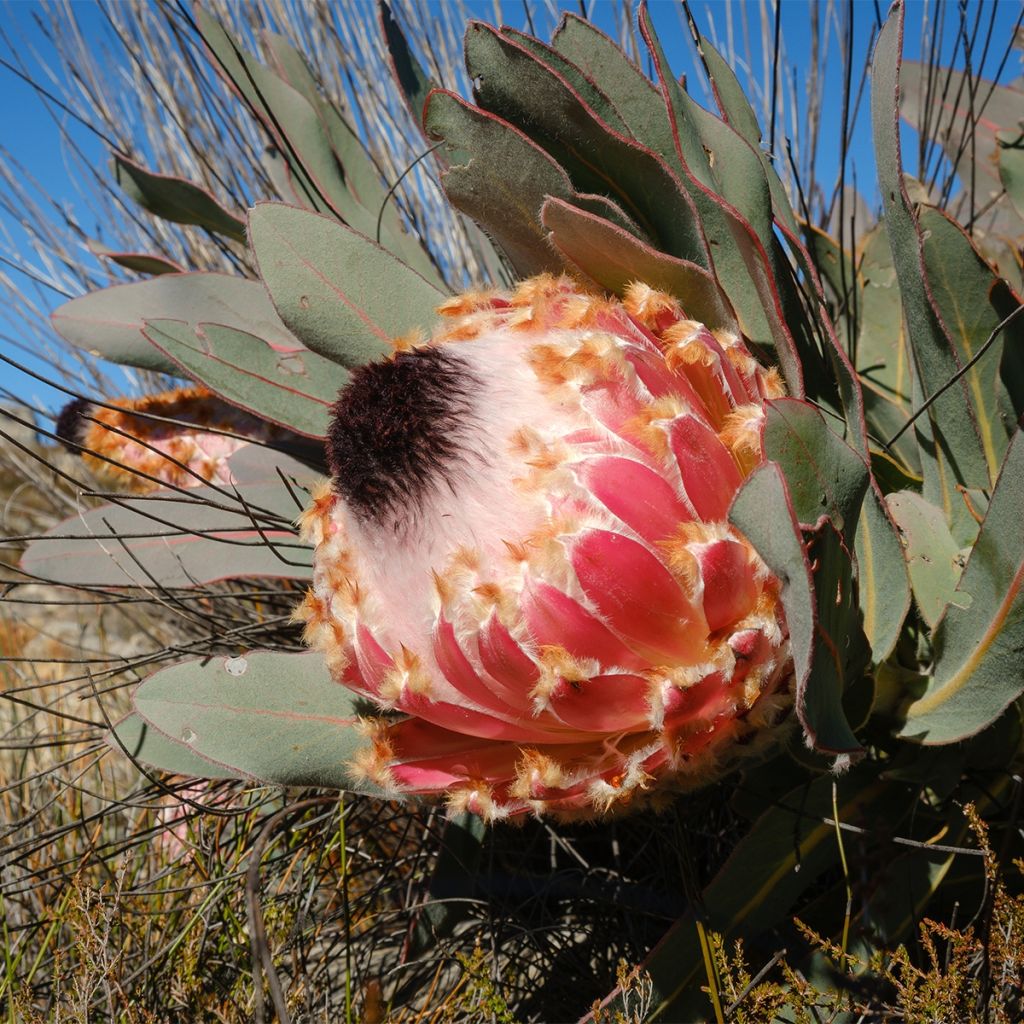

Protea magnifica - Protée magnifique, Reine Protée
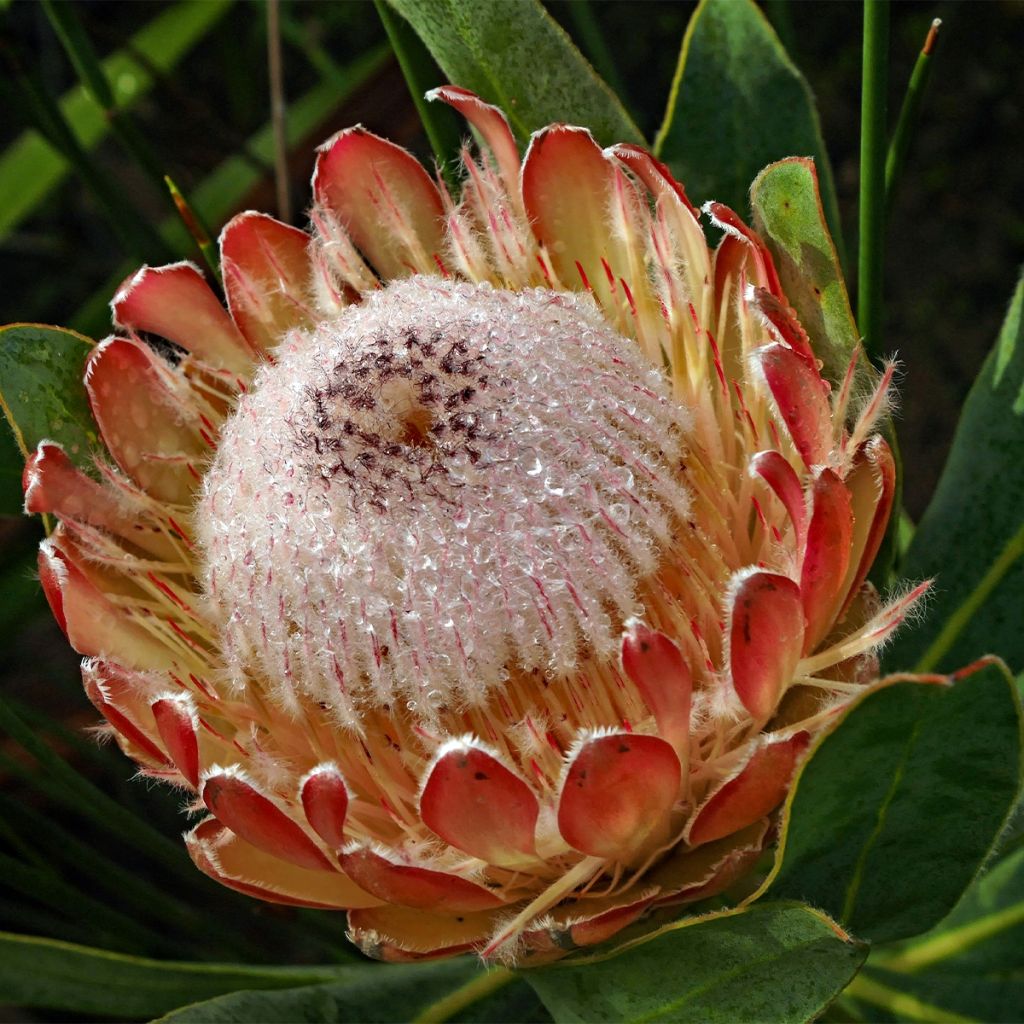

Protea magnifica - Protée magnifique, Reine Protée
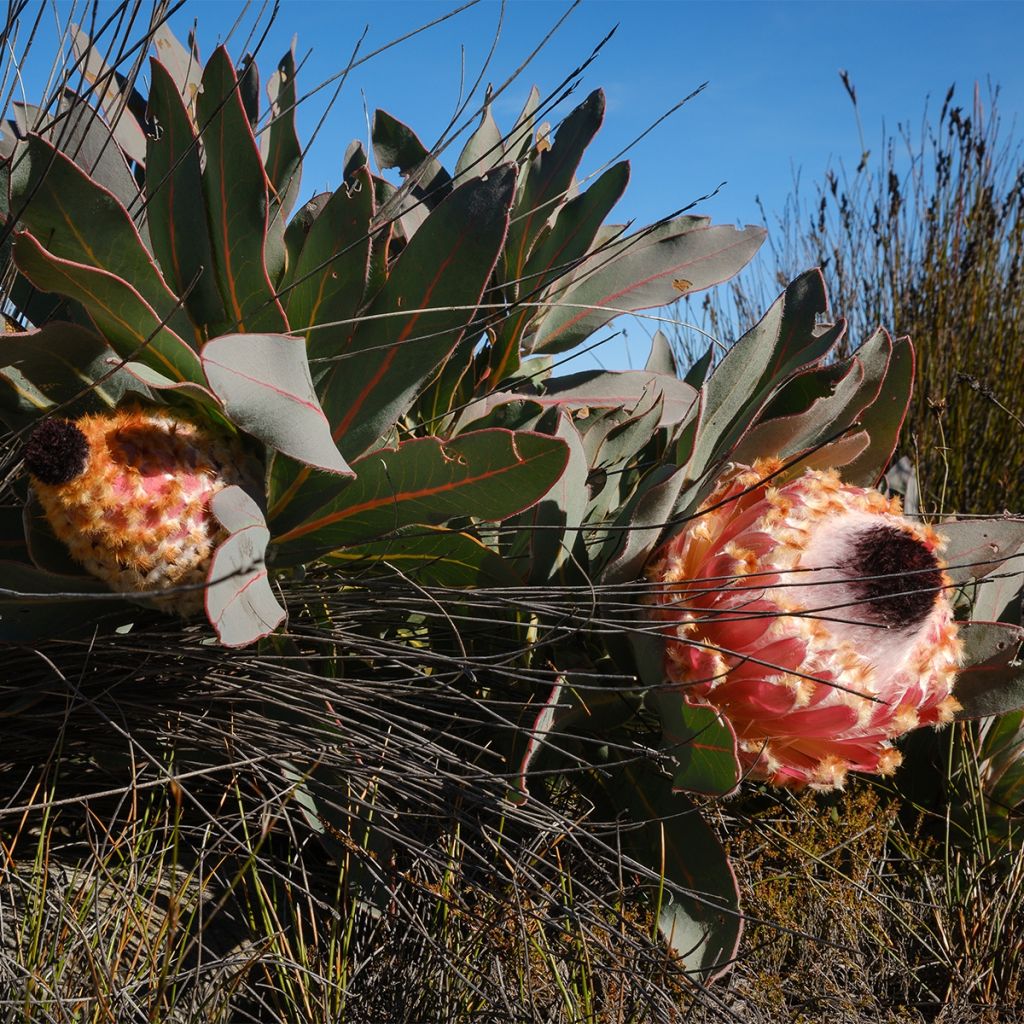

Protea magnifica - Protée magnifique, Reine Protée
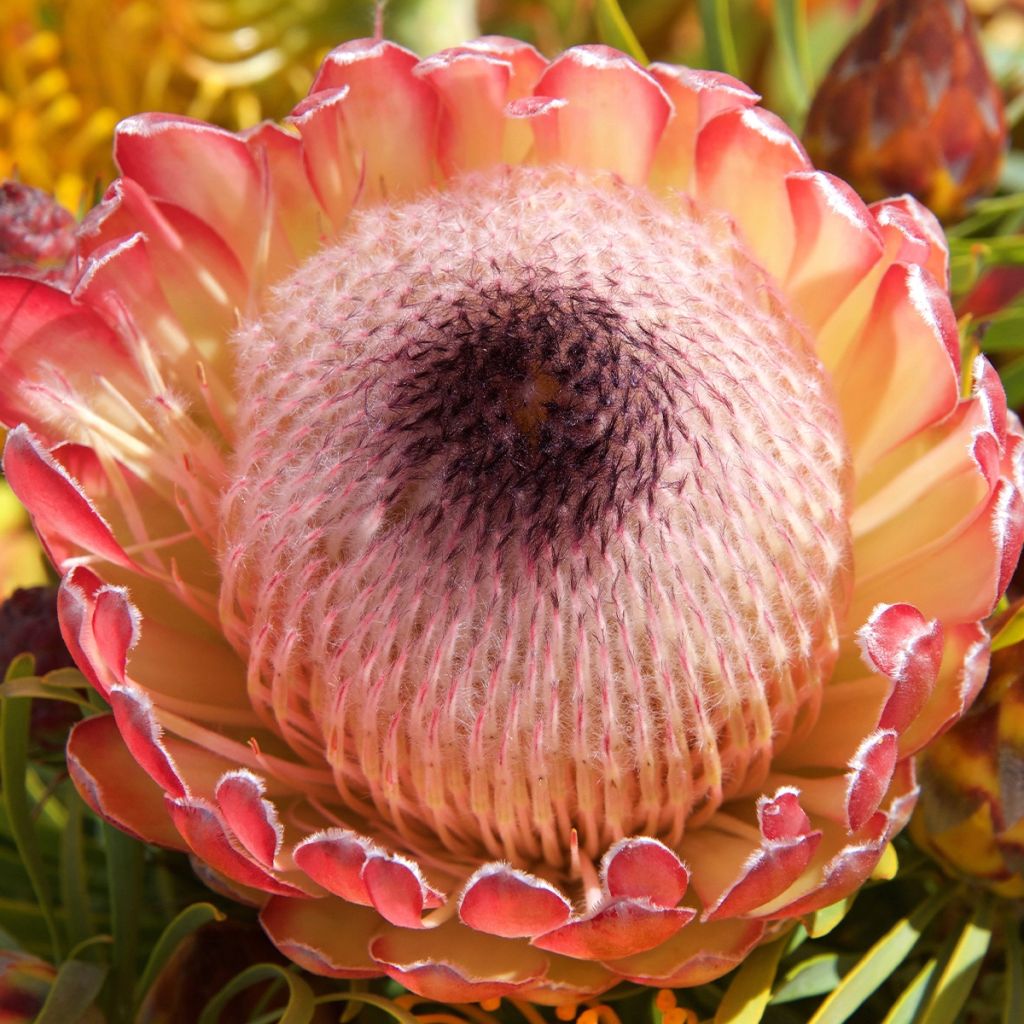

Protea magnifica - Protée magnifique, Reine Protée
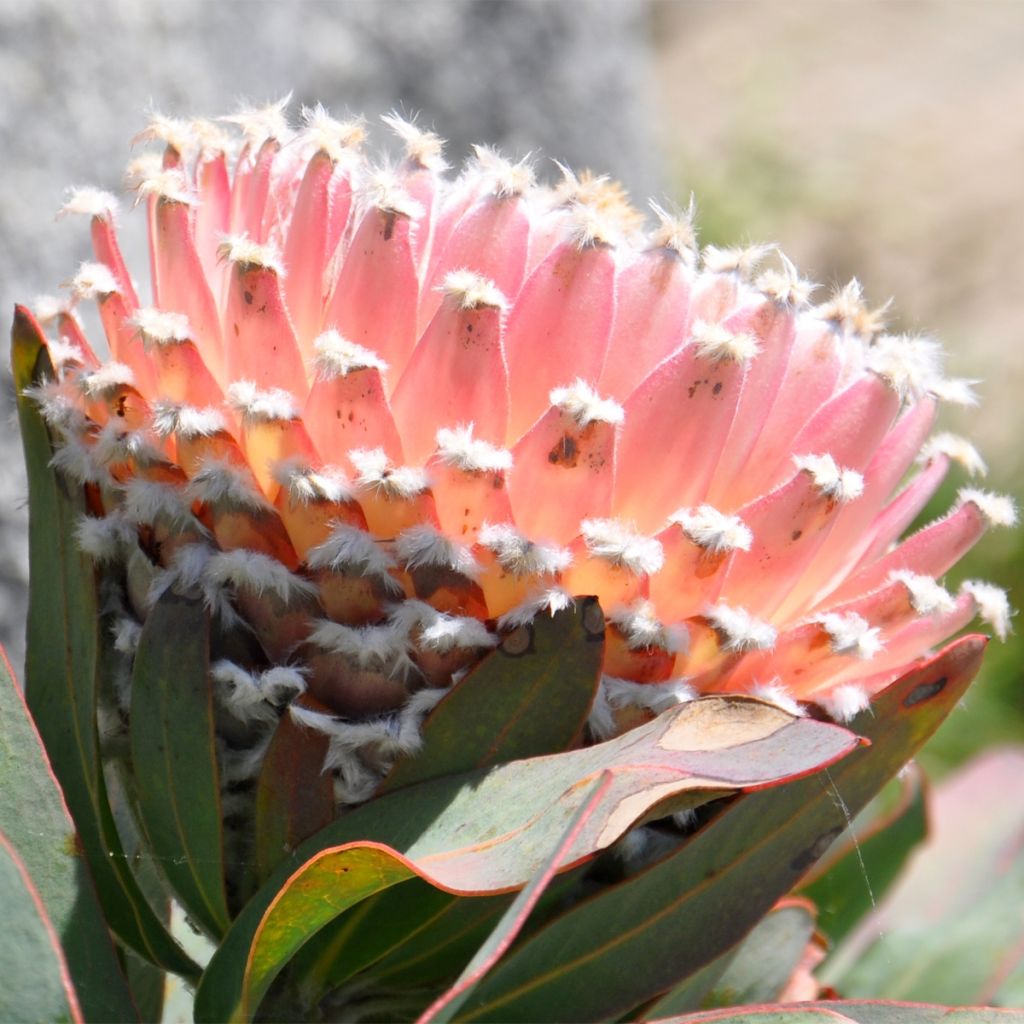

Protea magnifica - Protée magnifique, Reine Protée
Protea magnifica
Protea magnifica
Queen Protea, Queen Sugarbush, Bearded Sugarbush, Woolly Beard
This item cannot be shipped to the selected country
Delivery charge from €5.90
More information
Schedule delivery date,
and select date in basket
This plant carries a 24 months recovery warranty
More information
We guarantee the quality of our plants for a full growing cycle, and will replace at our expense any plant that fails to recover under normal climatic and planting conditions.
From €5.90 for pickup delivery and €6.90 for home delivery
Express home delivery from €8.90.
Does this plant fit my garden?
Set up your Plantfit profile →
Description
Protea magnifica, the Queen Protea, is a botanical species that offers the largest flowers after those of the King protea Protea cynaroides. It is also one of the most sought after by collectors for its huge silky cream to silvery-pink heads. This beautiful shrub with a wide habit and long glaucous leaves blooms in almost all the major mountain ranges of the southwest of the Cape. As it tolerates light frosts (down to -6 or -7 °C (21.2 or 19.4°F)), it can be acclimatised in Mediterranean or Atlantic coastal gardens, planted in a lime-poor and very sunny rockery. Cultivating it in a large pot is however preferable, not only to control the composition of the growing substrate, but also because it is essential to protect the young plants as soon as the first frosts occur.
Protea magnifica is endemic to the Cape Province, where it can be found between 1200 and 2700 meters (3937 and 8858 feet) above sea level on generally nutrient-poor, acidic, and well-drained soils. In the wild, it has a variable habit, often prostrate and creeping, cascading down rocks and steep slopes. In this region of the world, the plants experience rain, fog, or snow in winter, as well as dry and hot summers. All proteas are shrubby plants of the protea family native to the Cape region in South Africa. Strange in every way, they often need fire for their seeds to germinate.
The Queen protea is a slow-growing bush, with a lifespan of up to 30 years. The plant develops a single, robust main stem supporting a bushy and wide growth. Eventually, it reaches about 1.50 meters (5 feet) in all directions. The leaves vary in size and shape, with juvenile leaves being large and hairy, while mature leaves become leathery and glaucous. Oval in shape, they measure between 10 and 20 cm (4 and 8in) long and 3 to 6 cm (1 to 2in) wide. Their lamina is strongly veined and displays red to yellow median veins. Flowering occurs from March to May-June. It consists of cup-shaped heads, measuring 15 cm (6in) wide and 15-16 cm (6in) long. In the wild, the colour palette of the outer floral bracts is vast, including greenish cream, cream, pink, salmon pink, pinkish reds, and deep carmine. The bracts' bristles vary in color and density, ranging from white to violet-black or tawny brown with a black, brown or even white central tip. The selections available in nurseries are mostly cream-coloured, more or less tinged with pastel pink. The thick roots of this plant also serve as a storage organ. In case of fire, the protea is capable of regenerating from its roots, fertilised by its own ashes.
Proteas are unusual and fascinating plants that are not easily forgotten. The Protea magnifica is undoubtedly one of the most spectacular species. Florists, as well as gardeners, appreciate the longevity of its often oversized flowers, adorned with refined colors. It will thrive in gardens spared by heavy frosts, in light, poor, acidic to neutral soil, even if it gets very dry in summer. It will look dramatic in a large exotic rockery, alongside Pride of Madeira, Puya, Agaves, Dasylirion, Leucadendron, and more.
A unique root system adapted to poor and dry soils:
Plants growing in nutrient-poor soils usually form a symbiosis with soil fungi that promote water and nutrient absorption. But the Proteas have chosen a different strategy: they develop a large quantity of special lateral roots along their main roots. These roots are called proteoid roots and are induced by rain, developing under the layer of dead leaves that covers the plant's base. Rain promotes the decomposition of leaves, resulting in the release of nutrients. These ephemeral roots usually dry up at the end of the growth period. They have a water and nutrient absorption activity twice as high as "normal" roots.
Report an error about the product description
Protea magnifica in pictures
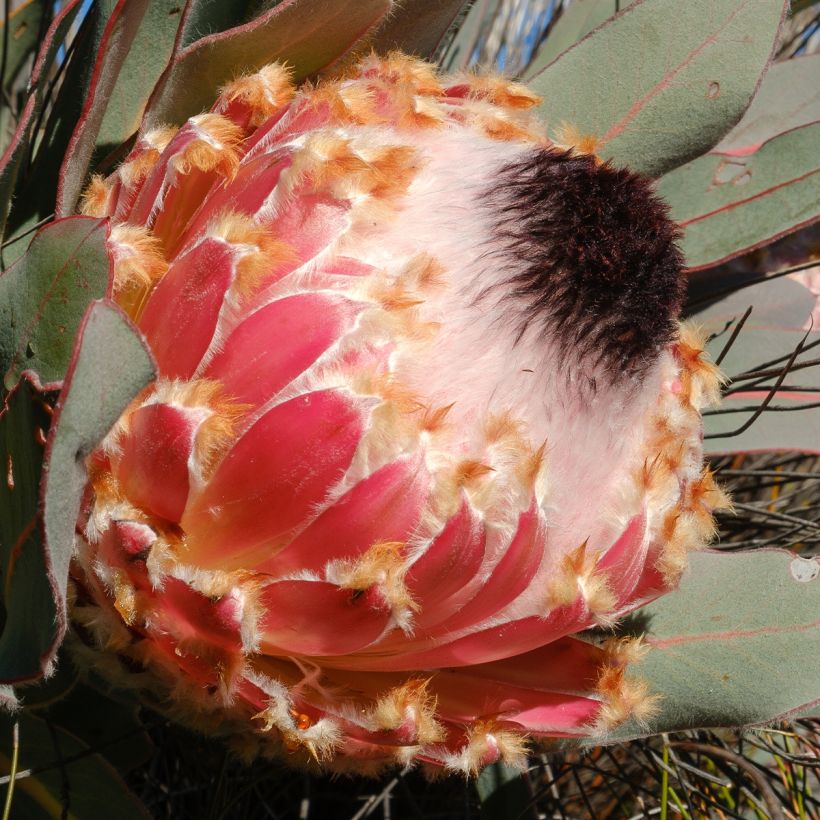

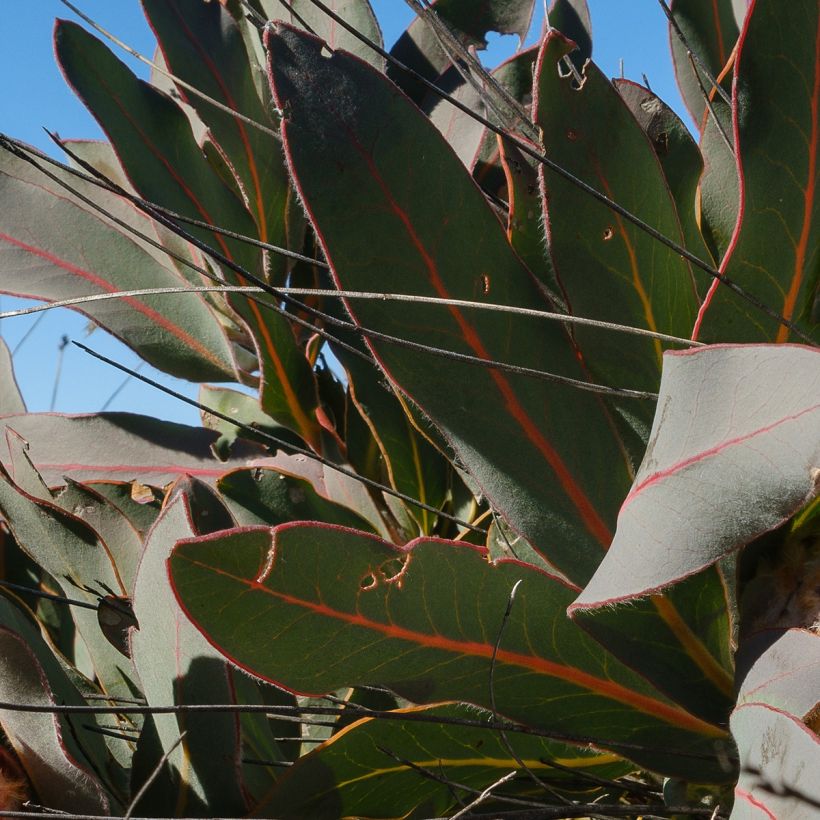

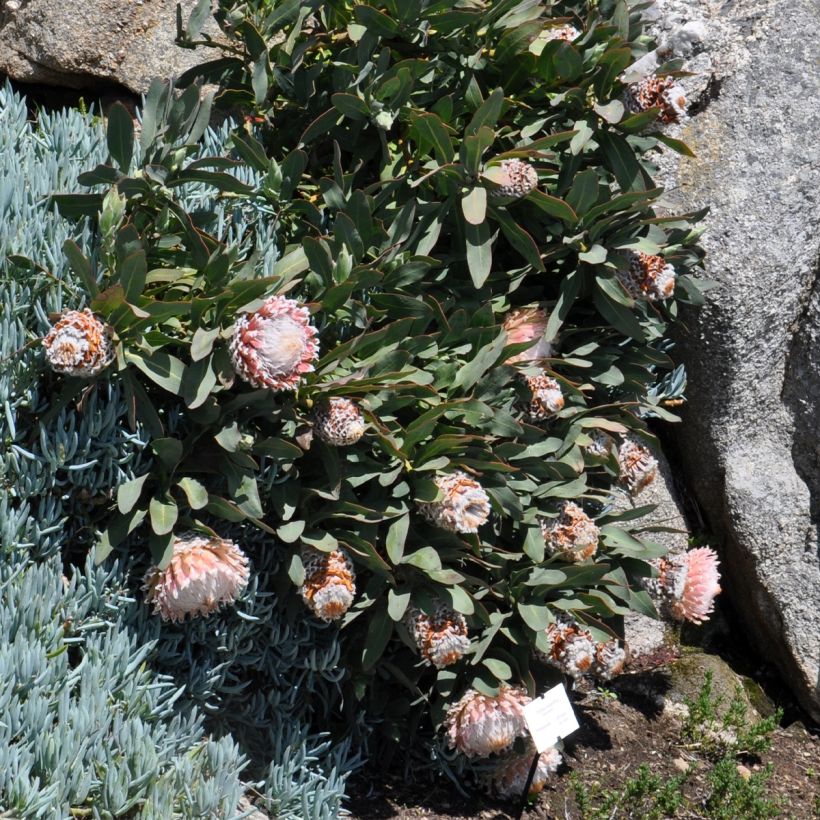

Plant habit
Flowering
Foliage
Botanical data
Protea
magnifica
Proteaceae
Queen Protea, Queen Sugarbush, Bearded Sugarbush, Woolly Beard
South Africa
Other Protea
Planting and care
Plant Protea magnifica preferably in spring, or in autumn in a very mild climate, in a sunny and sheltered position. This plant requires a light, well-drained, poor, mineral soil, with an acidic or neutral tendency (6<pH<7). A mixture including leaf compost, a little bit of ericaceous compost or crushed pine bark, and coarse river sand or perlite is usually appropriate. Proteas are sensitive to excess phosphates and nitrates, so avoid giving them too much fertiliser, or even fertilising them altogether. A small amount of dried blood at the base of the plant, in spring, is generally sufficient. While adult plants can tolerate occasional frosts of around -6°C (21.2°F) in dry soil, young proteas should be protected from frost during their first years, in a frost-free location in cool climates or under a protective fleece in regions with mild winters. This plant flowers after about 4 to 5 years of cultivation from sowing. For indoor cultivation, it is important to ensure good ventilation in the room and to avoid watering with hard water (some mineral waters or low-calcium spring waters are particularly suitable, have a look at the labels).
Planting period
Intended location
Care
This item has not been reviewed yet - be the first to leave a review about it.
Evergreen shrubs
Haven't found what you were looking for?
Hardiness is the lowest winter temperature a plant can endure without suffering serious damage or even dying. However, hardiness is affected by location (a sheltered area, such as a patio), protection (winter cover) and soil type (hardiness is improved by well-drained soil).

Photo Sharing Terms & Conditions
In order to encourage gardeners to interact and share their experiences, Promesse de fleurs offers various media enabling content to be uploaded onto its Site - in particular via the ‘Photo sharing’ module.
The User agrees to refrain from:
- Posting any content that is illegal, prejudicial, insulting, racist, inciteful to hatred, revisionist, contrary to public decency, that infringes on privacy or on the privacy rights of third parties, in particular the publicity rights of persons and goods, intellectual property rights, or the right to privacy.
- Submitting content on behalf of a third party;
- Impersonate the identity of a third party and/or publish any personal information about a third party;
In general, the User undertakes to refrain from any unethical behaviour.
All Content (in particular text, comments, files, images, photos, videos, creative works, etc.), which may be subject to property or intellectual property rights, image or other private rights, shall remain the property of the User, subject to the limited rights granted by the terms of the licence granted by Promesse de fleurs as stated below. Users are at liberty to publish or not to publish such Content on the Site, notably via the ‘Photo Sharing’ facility, and accept that this Content shall be made public and freely accessible, notably on the Internet.
Users further acknowledge, undertake to have ,and guarantee that they hold all necessary rights and permissions to publish such material on the Site, in particular with regard to the legislation in force pertaining to any privacy, property, intellectual property, image, or contractual rights, or rights of any other nature. By publishing such Content on the Site, Users acknowledge accepting full liability as publishers of the Content within the meaning of the law, and grant Promesse de fleurs, free of charge, an inclusive, worldwide licence for the said Content for the entire duration of its publication, including all reproduction, representation, up/downloading, displaying, performing, transmission, and storage rights.
Users also grant permission for their name to be linked to the Content and accept that this link may not always be made available.
By engaging in posting material, Users consent to their Content becoming automatically accessible on the Internet, in particular on other sites and/or blogs and/or web pages of the Promesse de fleurs site, including in particular social pages and the Promesse de fleurs catalogue.
Users may secure the removal of entrusted content free of charge by issuing a simple request via our contact form.
The flowering period indicated on our website applies to countries and regions located in USDA zone 8 (France, the United Kingdom, Ireland, the Netherlands, etc.)
It will vary according to where you live:
- In zones 9 to 10 (Italy, Spain, Greece, etc.), flowering will occur about 2 to 4 weeks earlier.
- In zones 6 to 7 (Germany, Poland, Slovenia, and lower mountainous regions), flowering will be delayed by 2 to 3 weeks.
- In zone 5 (Central Europe, Scandinavia), blooming will be delayed by 3 to 5 weeks.
In temperate climates, pruning of spring-flowering shrubs (forsythia, spireas, etc.) should be done just after flowering.
Pruning of summer-flowering shrubs (Indian Lilac, Perovskia, etc.) can be done in winter or spring.
In cold regions as well as with frost-sensitive plants, avoid pruning too early when severe frosts may still occur.
The planting period indicated on our website applies to countries and regions located in USDA zone 8 (France, United Kingdom, Ireland, Netherlands).
It will vary according to where you live:
- In Mediterranean zones (Marseille, Madrid, Milan, etc.), autumn and winter are the best planting periods.
- In continental zones (Strasbourg, Munich, Vienna, etc.), delay planting by 2 to 3 weeks in spring and bring it forward by 2 to 4 weeks in autumn.
- In mountainous regions (the Alps, Pyrenees, Carpathians, etc.), it is best to plant in late spring (May-June) or late summer (August-September).
The harvesting period indicated on our website applies to countries and regions in USDA zone 8 (France, England, Ireland, the Netherlands).
In colder areas (Scandinavia, Poland, Austria...) fruit and vegetable harvests are likely to be delayed by 3-4 weeks.
In warmer areas (Italy, Spain, Greece, etc.), harvesting will probably take place earlier, depending on weather conditions.
The sowing periods indicated on our website apply to countries and regions within USDA Zone 8 (France, UK, Ireland, Netherlands).
In colder areas (Scandinavia, Poland, Austria...), delay any outdoor sowing by 3-4 weeks, or sow under glass.
In warmer climes (Italy, Spain, Greece, etc.), bring outdoor sowing forward by a few weeks.

































